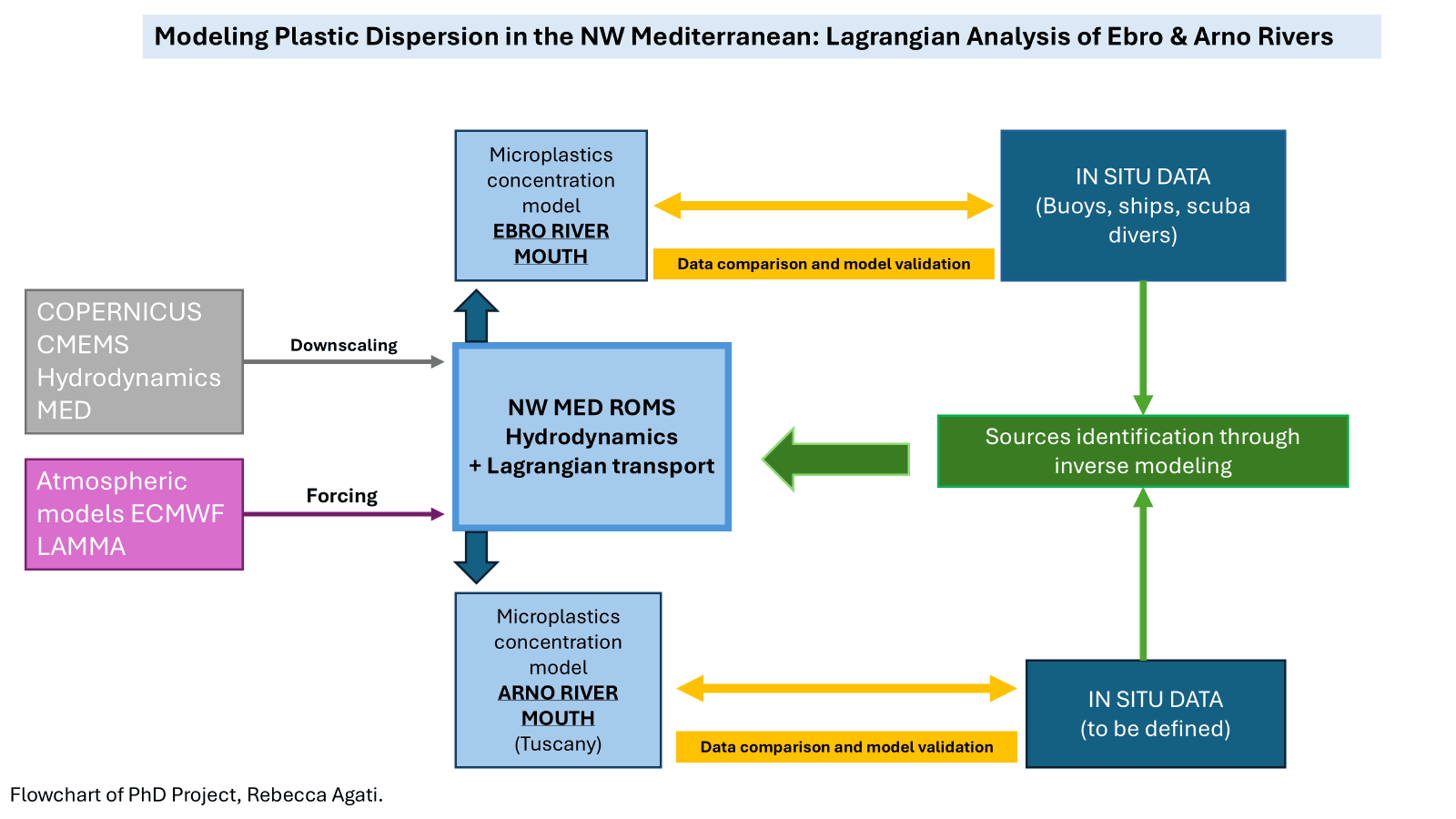Modeling Plastic Dispersion in the NW Mediterranean: Lagrangian Analysis of Ebro & Arno Rivers
Ocean Sciences, Modeling
Research area
The scientific context of my project revolves around numerical oceanographic modeling and analysing the dynamics of plastic contaminants to understand their transport and dispersion mechanisms.
By integrating hydrodynamic models (such as ROMS) with Lagrangian tracking approaches, the project aims to elucidate the movement, accumulation, and degradation of plastic particles in aquatic environments, particularly in river systems and coastal regions of the Mediterranean.
Project goals
The specific focus of my project is the characterization of river deltas as sources of plastic pollution in the north-western Mediterranean Sea. The study examines two rivers: the Arno, modelled using a coupled ROMS and LTRANS Lagrangian model, and the Ebro River delta. For the Ebro, the Lagrangian model has yet to be finalized, but GNOME could be used to track the beaching of macroplastics transported by the river systems.
Once the models are complete, the analysis will focus on changes in the physical properties of the particles based on input characterization, as well as the effects of heavy rainfall events by modifying the event scale.
The models will be validated trough sampling data campaigns and literature data available on plastic production and input from river deltas.
Computational approach
To obtain accurate results, several technological challenges must be addressed:
Model Coupling: Effectively coupling the hydrodynamic model (ROMS) with the Lagrangian model (LTRANS and GNOME) for precise tracking of plastic particles, ensuring realistic simulations.
Data Resolution and Accuracy: Acquiring high-resolution environmental data (e.g., current speeds, river discharge) is crucial, while addressing uncertainties in input data, such as river flow and plastic input.
Scalability and Computational Power: Running simulations with large datasets, especially when modeling multiple scenarios, requires significant computational resources for high-resolution models.
Model Validation: Aligning model outputs with real-world data, especially in complex systems like river deltas, to validate plastic concentrations.
Integration of Event-Driven Changes: Incorporating environmental variations (e.g., rainfall, seasonal changes) into the model, adjusting particle properties and scales as necessary.
Balancing computational efficiency, data quality, and model robustness is essential for accurate, actionable results in Mediterranean plastic pollution management.
The figure illustrates the workflow of my research project, where modeling and sampling activities occur sequentially, while the development of the two models (using different Lagrangian approaches) progresses concurrently.
Rebecca Agati
CNR - ISMAR; University of Florence; OGS
I have a Master's degree in environmental engineering and am certified as a Hydraulic Engineer. My background focuses on fluvial and environmental hydraulics. Both my bachelor's and master's theses were experimental studies on the transport of microparticles in aquatic and terrestrial environments. At the end of my master's, I spent 6 months in the Netherlands (Leiden) writing my thesis in collaboration with the University of Environmental Sciences, studying the trophic transfer of nanoplastics in a food chain. An article based on this research was published: Zantis, Laura J., et al. 'Quantitative tracking of nanoplastics along the food chain from lettuce (Lactuca sativa) to snails (Cantareus aspersus).' Science of the Total Environment 955 (2024): 176848. I am currently pursuing an international doctorate in civil and environmental engineering, focusing on a Plastic Budget Methodology to model plastic pathways, degradation, and storage in rivers, coastal areas, and open seas.










